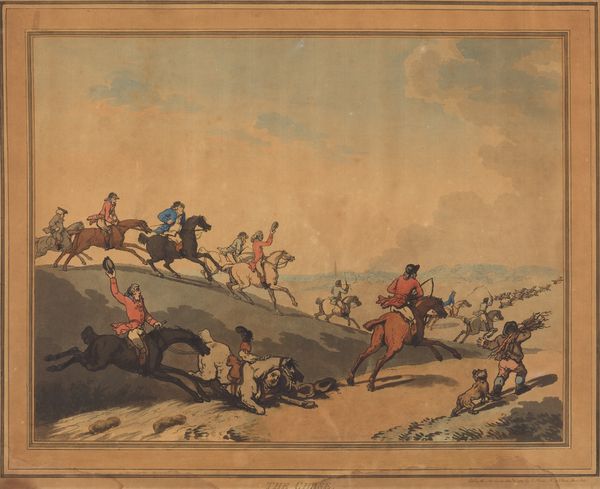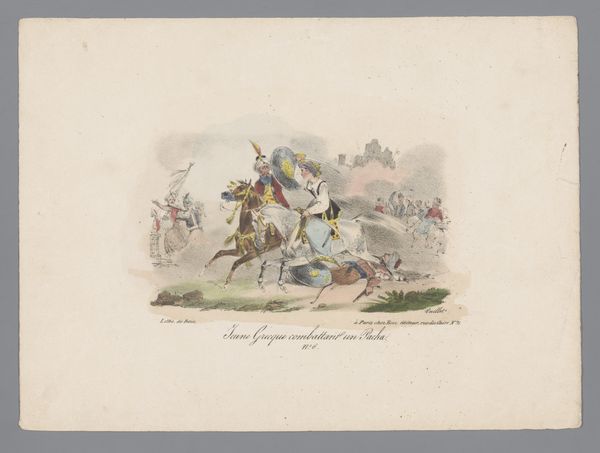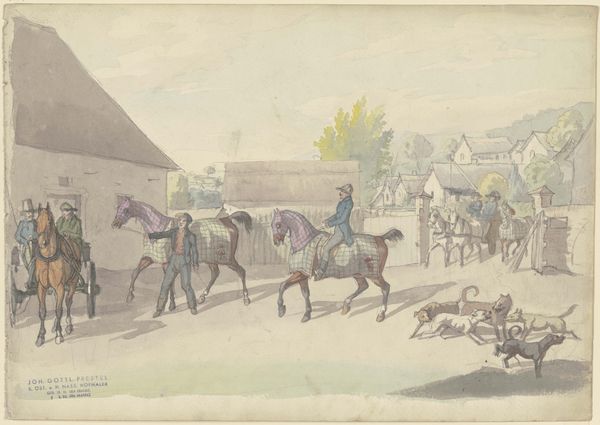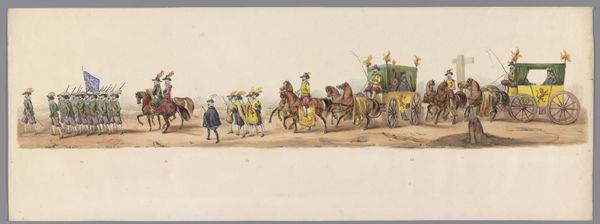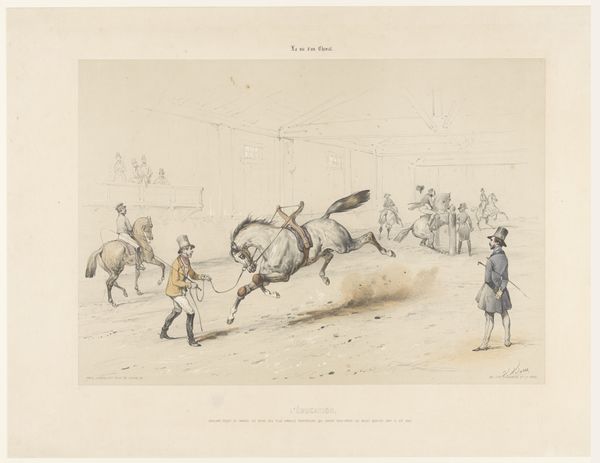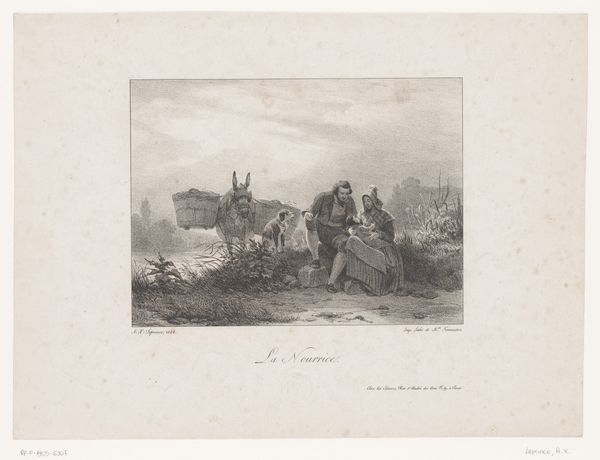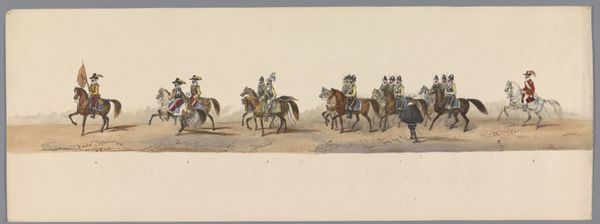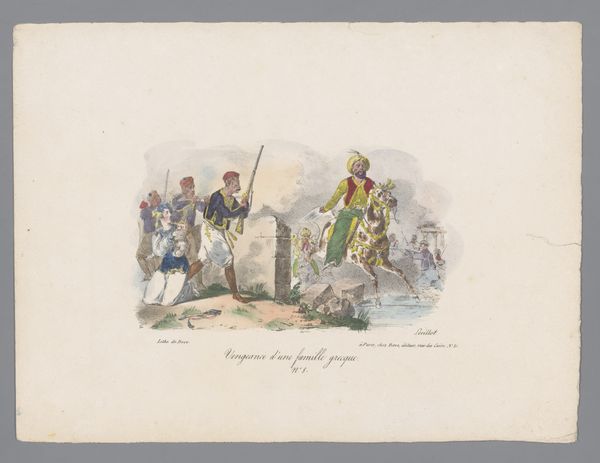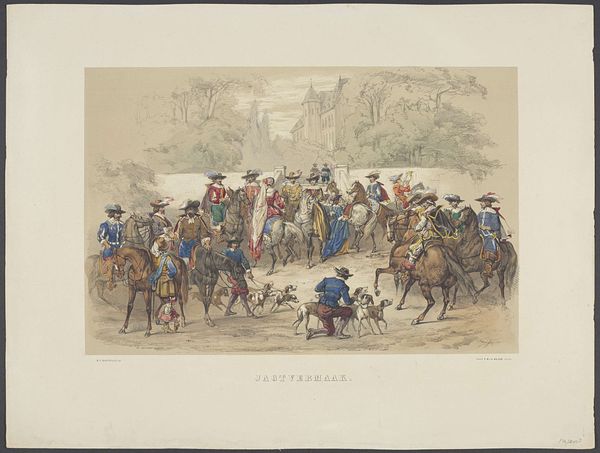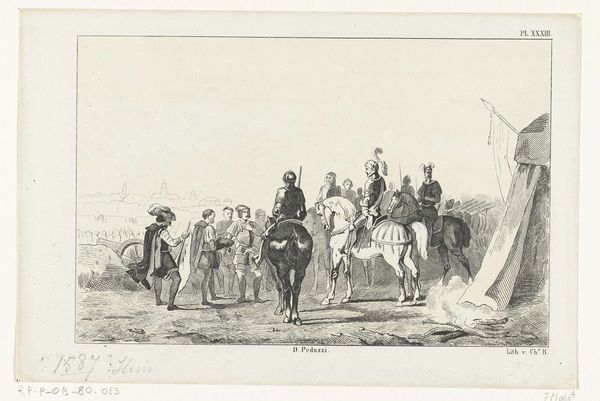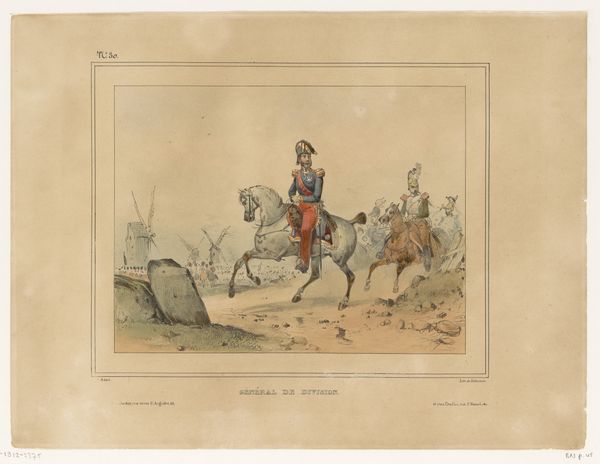
Dimensions: height 229 mm, width 303 mm
Copyright: Rijks Museum: Open Domain
Editor: So this is "Ruitergevecht bij een huis" by George Hendrik Breitner, created sometime between 1867 and 1923. It’s a watercolor painting currently at the Rijksmuseum. The scene depicts a chaotic battle between horsemen, and what strikes me first is the rather pale and translucent quality of the watercolor, it seems almost unfinished. What are your thoughts when you see this? Curator: What grabs my attention immediately is the physical making of the work. It's Breitner using watercolor, a medium traditionally associated with sketching or preparatory studies, not necessarily a finished artwork ready for the market. How does the use of watercolor itself influence the perception of "Ruitergevecht bij een huis" when the artwork represents a scene of battle? Editor: That's interesting. I hadn’t really considered the connotations of watercolor. Does its fragility somehow diminish the sense of the epic nature one might expect from a battle scene? Curator: Precisely! Consider the social context. Breitner, while associated with the Hague School and later known for his gritty urban scenes, here uses a delicate medium to depict a combative scene. He is using what he has available. Why is that important? Could it be commenting on the glamourisation of warfare? Perhaps all war is, in the end, but an ethereal act. Editor: I see what you mean. It makes me consider how the "low" material is actually quite provocative. The battle itself then almost becomes secondary to the means used to depict it. Curator: Yes. The value shifts from the narrative to the materiality and labor inherent in its production. We have to also ask why this piece resides in a national institution; How did the artist’s process and materials challenge established art hierarchies of the time? Editor: This has made me realize how much the choice of material can impact our interpretation, and to reflect upon what "battle" itself can be beyond its mere violent definition. Curator: Exactly. Now, look closer into how it speaks to the intersection of labor, materiality, and societal norms that define art production.
Comments
No comments
Be the first to comment and join the conversation on the ultimate creative platform.
